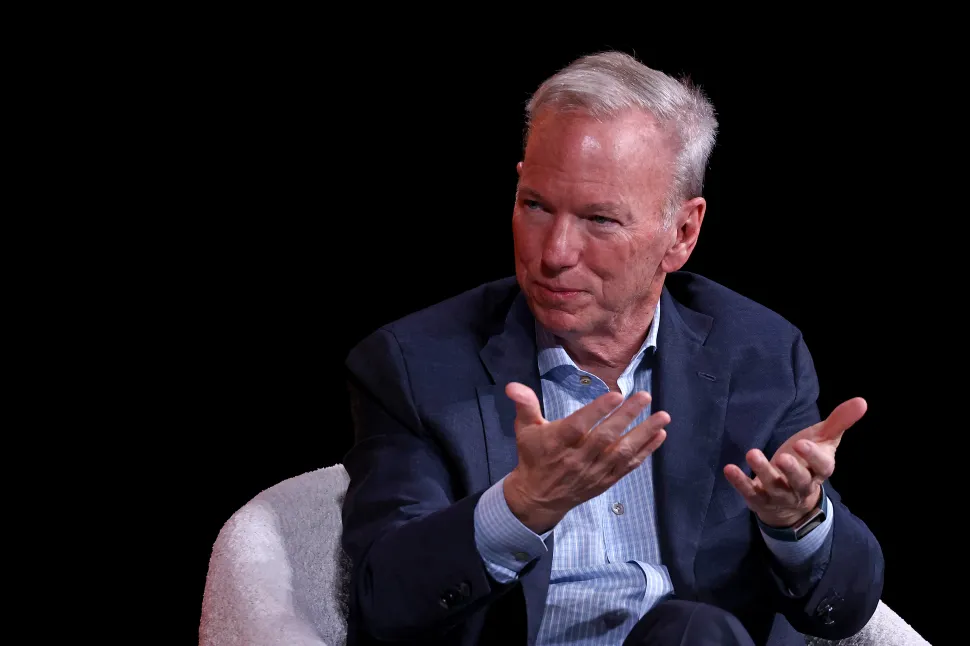The Industrial Age of AI: Eric Schmidt’s Vision for Innovation and Global Power
Introduction – A New Era of Intelligence in AI Industrialization
Eric Schmidt, former CEO and Chairman of Google, recently made a striking claim that’s shaking up the tech world: the cost of AI-generated answers is dropping tenfold every single year. According to him, this isn’t just another upgrade—it’s the start of AI industrialization, a process as transformative as the steam engine, electricity, or the internet. Much like past revolutions, this signals the dawn of the future of artificial intelligence and a true civilizational shift.
The Core of Schmidt’s Vision – The Industrialization of Intelligence
Smarter Algorithms Driving AI Innovation
Today’s AI models are faster, leaner, and more intelligent than ever before. Smarter algorithms allow them to learn quickly, use fewer resources, and provide nuanced answers. This goes beyond simple Q&A—AI can now reason, identify emotions, solve novel problems, and even collaborate in creative thinking.
Takeaway: AI innovation has shifted from being a passive tool to an active partner in progress.
Expanded Context Handling in the AI Revolution
In the early days, chatbots often lost track of conversations. Now, large language models process millions of tokens—remembering context, analyzing research, understanding codebases, and generating human-like memory. This breakthrough represents a major leap in the AI revolution, enabling systems to manage workflows and deliver highly contextual responses.
Takeaway: AI can now think in context, not just react to input.
Faster Computation and Hardware Power for AI Transformation
The rise of custom AI chips and powerful cloud servers has unlocked exponential speed. Tasks that once required hours now take minutes or even seconds. For industries like healthcare, finance, and emergency response, this AI transformation is groundbreaking.
Takeaway: Faster computation makes AI practical for real-time, high-stakes decisions.
AI Industrialization: A Partner in Human Creativity, Not Just a Tool
Schmidt stresses that AI industrialization isn’t just about scaling computation—it’s about collaboration. From co-writing symphonies to solving medical puzzles, AI has become a thinking partner in human innovation.
Takeaway: AI is now a teammate, not just a machine.
Geopolitics and the AI Power Race
The Role of Energy in Scaling Artificial Intelligence
AI at scale demands massive energy supplies. Schmidt warns that the U.S. may need an additional 90 gigawatts of electricity—the equivalent of dozens of nuclear plants—to power future AI data centers. Without strategic energy planning, AI industrialization cannot reach its full potential.
Takeaway: AI growth is tied directly to energy infrastructure.
The U.S.–China Rivalry in the Future of AI Innovation
Schmidt highlights the intense AI rivalry between the U.S. and China. With China’s rapid investment in hardware, education, and open-source models like DeepSeek-R1, the global balance of power could shift.
He argues that open-source AI is vital for democratic development, preventing monopolies and encouraging global AI innovation.
Takeaway: The AI race isn’t just technological—it’s geopolitical.
Governance, Ethics, and Responsible AI Industrialization
As AI systems increasingly make decisions in surveillance, logistics, and even defense, Schmidt warns of the risks posed by unchecked AI industrialization. Weaponized autonomy and poor governance could destabilize global norms.
Instead of over-regulation, he calls for responsible AI innovation with balanced governance, safety checks, and international collaboration.
Takeaway: The future of AI depends on striking the balance between safety and innovation.
Real-World Applications of AI Innovation Already Here
AI is no longer confined to labs—it’s transforming industries across the world:
- Healthcare: diagnostics, drug discovery, personalized care
- Finance: fraud detection, trading, automation
- Education: tutoring, personalized learning
- Creative Fields: music, art, content creation
Each of these shows how AI industrialization is already embedded in daily life and accelerating the AI revolution.
Takeaway: AI is already reshaping industries—and it’s only accelerating.
The Civilizational Shift – Scaling Cognition Through AI Industrialization
Humanity once scaled labor with machines and communication with the internet. Now, for the first time, we are scaling cognition itself. Through AI industrialization, knowledge and reasoning are being transformed into digital infrastructure, reshaping how we think, decide, and create.
Takeaway: We are industrializing intelligence—the ultimate human asset.
Conclusion – The Future of AI Innovation and Global Responsibility
According to Eric Schmidt, this is not a distant dream—it’s already happening. AI is abundant, accessible, and powerful. But with great power comes responsibility.
The nations, businesses, and societies that invest in AI innovation, AI industrialization, and open systems will define the next intelligence age. Schmidt’s message is clear: the future of artificial intelligence belongs to those who build AI at scale and govern it wisely.
.
{ “@context”: “https://schema.org”, “@type”: “BlogPosting”, “headline”: “The Industrialization of Intelligence: Eric Schmidt’s Vision for AI”, “description”: “Eric Schmidt’s bold vision of the industrialization of intelligence redefines the future of AI. As AI-generated answers become 10x cheaper each year, this transformation is being compared to past revolutions like electricity or the internet.”, “url”: “https://aicoursera.com/industrialization-of-intelligence-conclusion/”, “image”: { “@type”: “ImageObject”, “url”: “https://aicoursera.com/wp-content/uploads/2025/08/dydtgd.jpg”, “description”: “Illustration of AI industrialization inspired by Eric Schmidt’s vision of scalable, cost-efficient intelligence infrastructure.” }, “author”: { “@type”: “Organization”, “name”: “AICoursera” }, “publisher”: { “@type”: “Organization”, “name”: “AICoursera”, “logo”: { “@type”: “ImageObject”, “url”: “https://aicoursera.com/wp-content/uploads/2025/05/Untitled_design__26_-removebg-preview.png” } }, “datePublished”: “2025-08-03”, “keywords”: “latest AI news updates, industrialization of intelligence, Eric Schmidt AI, AI infrastructure, future of artificial intelligence”, “mainEntityOfPage”: { “@type”: “WebPage”, “@id”: “https://aicoursera.com/industrialization-of-intelligence-conclusion/” }, “articleSection”: “AI News” }




